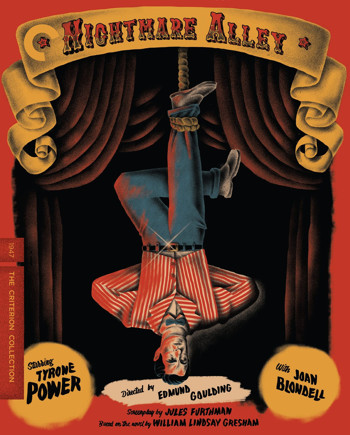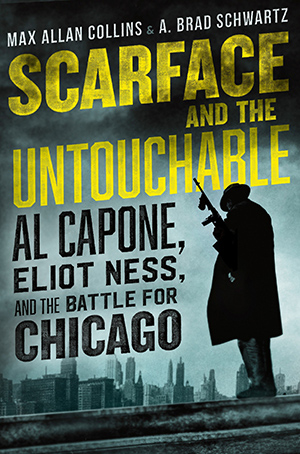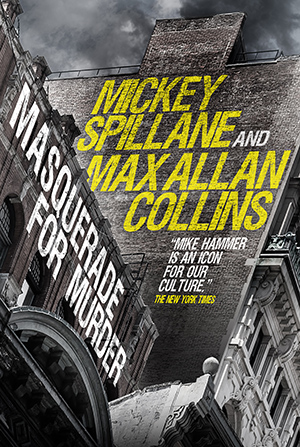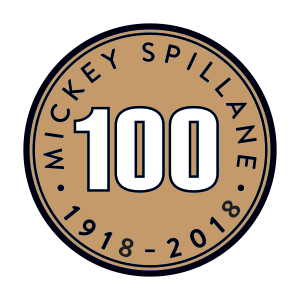In last week’s comments, I was scolded for speaking my mind in a way that might alienate my younger fans. I hope I have some, but if they like my work, surely they don’t want me to mimic their political and social points of view, just to curry favor.
I do read (or at least thumb through) Entertainment Weekly and Rolling Stone, and encounter mostly names of artists in film and music that mean nothing to me. Not that those names should. I am just trying, in a half-hearted, half-assed way, to keep up; but that’s a hopeless pursuit, really. We are so fragmented in our popular culture – we have so much streaming, so much popping up on social media platforms, so little Beatles-on-Ed-Sullivan shared experiences, that we are all our own little islands.
That has its pluses and minuses. More stuff can get out there, but fewer eyes and ears will share the same or even similar experiences. When I remark that a TV show or movie is “painfully diverse,” I don’t mean diversity is bad – I mean, forced, cynical diversity is at odds with good storytelling. The preview I saw recently of an upcoming new version of Cyrano features Peter Dinklage in the title role – and swapping the original’s big nose for the actor’s diminutive height seems to make sense. Casting a Black actor as Christian who woos white Roxanne jars. Why, because I hate Black people? No, because it’s (a) historically risible, and (b) the whole story is set up around Roxanne being courted by a conventionally boring socially acceptable superficial clod who (to successfully win her) requires the poetic touch of a man considered to be ugly.
I’m not bent out of shape about it – this new Cyrano is a musical, after all, and there wasn’t a lot of Broadway-style singing going on between sword fights in 17th century France, either. I won’t avoid the movie, as I like sword fights, musicals and Peter Dinklage. But must we pretend the past was ethnically diverse?
The other side of the coin is represented by old Hollywood’s shameful mistreatment of minorities, particularly Blacks. That, of course, is a more complicated, even nuanced thing to navigate. On New Year’s Eve, over champagne and party mix, Barb and I watched Swing Time with Fred Astaire and Ginger Rogers. The 1936 film has the usual trivial, even irritating weak comedy surrounding transcendent dance numbers.
Astaire’s solo number is “Bojangles of Harlem,” supposedly a tribute to Bill “Bojangles” Robinson, whose dancing style has little if anything to do with Astaire’s. It’s an uncomfortable watch, though at times exhilarating (it’s Astaire, after all). But it’s Astaire in black face, and one of the special features on the excellent Criterion disc has Imogen Sara Smith discussing Astaire’s dance routine in terms of minstrel shows and other racially denigrating trends in show business during the first half of the 20th Century (and beyond).
Smith is an excellent critic, whose work on film noir has been commendable, and her discussion here of the shameful history leading up to a moment like the Astaire routine is accurate, even astute…as far as it goes. When the young Black woman lays blame at the feet of the “white men” who ran the studios, she neglects to discuss that white men were in charge of everything back then, and also that these particular white men were Jewish, and the object of plenty of prejudice themselves.
In another Criterion special feature, Gary Giddens – Bing Crosby’s brilliant biographer (like me, an old white guy) – discussing Astaire in black face quotes novelist L.P. Hartley: “The past is a foreign country: they do things differently there.”
I recall vividly my young-person reaction to minstrel show segments in movies and on television shows (this lasted well into the fifties and even sixties) as something distasteful and stupid. My reactions then – and, frankly, now – to how (what-was-already-yesterday’s) Hollywood handled black talent was a combination of marveling at the artistry of a Mantan Moreland or Tim Moore – two incredibly funny comedians – and how sadly ironic it was that men this talented had to maneuver around white stupidity to work their magic.
But as a kid I already understood that when Al Jolson and Eddie Cantor “blacked up” they were part of a show-business tradition they did not invent; and that – this is key – as Jewish comedians black face allowed them to be cheeky in a way they might not risk otherwise. Jolson and Cantor performed in musicals where their “black” characters were the smartest and funniest and most interesting in the story/cast. They were also the stars.
True, Jolson sentimentalized the Old South in a way that now rather curdles the blood – nobody gets caught up in “Mammy” or “Swanee” anymore. But when Jerry Lewis, in the late ‘50s and early ‘60s, was doing “Jolie” songs (he actually remade The Jazz Singer for TV), he was not saluting the Old South or putting down Black people – he was paying tribute to old show business and his own father, who was a Jolson imitator.
The past is a foreign country.
Writing fiction set in the past has gotten tricky as hell, but it always has been. Since the beginning of writing Nate Heller, I’ve had to consider what Heller’s language should be – in dialogue somebody might be “colored,” but in the narration (presumably written by him years later) he would likely use “black” or even “African American” (although we are now back to Black, albeit capitalized).
I almost always like Aaron Sorkin’s work, and his current Amazon Prime movie Being the Ricardos has its merits, with great performers having a blast delivering the writer’s trademark witty-to-a-fault dialogue. But Sorkin stumbles badly in the writing-about-the-past department. Some of it seems uncharacteristically sloppy – he refers to the “taping” of a show in an era before video tape (shows were filmed, or performed live with kinescopes sent to the west coast), even though the revolutionary multi-camera 35mm film technique developed by Desi Arnaz and cinematographer Karl Freund is referred to later.
Sorkin has Lucille Ball up against Judy Holliday for the lead in The Big Street in 1942 when Holliday didn’t even make her screen debut till 1949. He uses the term “showrunner” when it wasn’t around till the ‘90s. Easy-to- avoid anachronisms litter the screenplay. Perhaps the most egregious instance of Sorkin making no attempt to stay in period has Lucy accusing Desi of “gaslighting” her – a form of the word that dates to 2016.
Sorkin has had his problems with “woke” criticism, and he seems to be trying to court forgiveness here through the characterization of the young Madelyn Pugh (played by Arrested Development’s Alia Shawkat), portraying Pugh as a modernday feminist somehow time-machined to 1952 to confront Lucille Ball about the infantilization of her performances as Lucy Ricardo.
This is exactly the kind of thing that turns my stomach – courting the good opinion of the predominant cultural arbiters and selling out in the process.
Guess who doesn’t sell out? While the new Reno 911!: The Hunt for Qanon is not exactly a great movie, it’s certainly great fun, if you’re already a fan. With Patton Oswalt along for the ride, we travel with the Reno 911 team as they infiltrate a Qanon cruise in hopes of serving Q with a subpoena. How they endure a thirty-day quarantine on the ship (not Covid –“extreme diarrhea”) and wind up on Jeffrey Epstein’s sex island can best be summed up thusly: Trudy has an affair with a potted plant. It’s on Paramount Plus.

Among noir fans, I may be in the minority; but for me the Guillermo del Toro remake of Nightmare Alley misses badly.
I have pretty much universally liked del Toro’s other work, and have spoken here of how much I value Pacific Rim, Crimson Peak, and The Shape of Water. I sought out William Lindsay Gresham’s novel Nightmare Alley in high school after seeing the 1947 film version on TV, and it’s been on my shelf of favorite hardboiled literature ever since. I came to the film as a Tyrone Power fan – based upon such swashbuckling fare as The Mark of Zorro, Captain from Castille and Prince of Foxes – and was gobsmacked by his performance as Stan Carlisle, a carny who rises to prominence as a nightclub mentalist, a grifter who gets out-grifted and falls even lower than the lowly place he started.
It’s a haunting story and works best in its first film incarnation, where Tyrone Power’s handsome charmer makes us root for him at first and even continue caring about him when his flaws start bringing him down. The film is a noir buff’s dream, with Colleen Gray as innocent Molly, Joan Blondell as worldly Zeena, and the wonderful, unjustly forgotten Helen Walker (of Murder, He Says!) as a complex, chilling femme fatale, Lilith Ritter. Written by Jules Furthman (whose screenplays include everything from Mutiny on the Bounty to To Have and Have Not) and directed by Edmund Goulding (Grand Hotel, The Razor’s Edge), the film is gritty and uncompromising even while dancing around the Production Code. While the novel ends with Stan condemned to the worst job at the carnival, the film has him reunited with his wife in a superficially, censor-satisfying ending, but clearly doomed to reenact the shabby fate of Zeena and her now-dead drunken husband. (There’s an excellent Criterion edition of this, as well.)
Del Toro claims this is a return to the novel and not a remake; however, the last line of his film comes from Furthman’s screenplay, not the novel. The original film ran 111 minutes while the new Nightmare Alley is two hours and thirty minutes, the storytelling basking in itself and refusing to move along on what is, after all, a carnival ride – a story that is essentially an ironic eight-page EC Comics horror yarn.
The new Nightmare’s art direction is ridiculously lavish – the cheap carnival’s fun house set is a visual feast and at the same time all wrong, and psychiatrist Lilith Ritter’s office is an absurdly vast art deco chamber. It’s like a musical where you come away humming the sets. Meanwhile, the director misuses some of our best actors. Bradley Cooper wanders dazed through the proceedings, utterly lacking the charm and charisma that make Tyrone Power believable as a manipulative charlatan and a rogue at times worth sticking with. Toni Collette’s Zeena trades in Joan Blondell’s earth mother for a skank who immediately climbs into a bathtub with just-walked-in carny Cooper. Cate Blanchette may be sending up every femme fatale of real films noir, or she just may be struggling with a script that presents her as an immediate over-the-top cliche. Rooney Mara’s Molly does whatever the script bids her to do at any given moment, obediently going along.
I am usually not this tough on films. There’s a lot of artistry and talent on hand here, but so is a woeful misunderstanding of the source material. Nightmare Alley, both Gresham’s novel and the original film, utilize a technique I heartily approve of: a melodramatic tale with a gritty surface of realism. But Del Toro actually expands and overblows the melodrama, making Carlisle a patricidal sociopath, turning Lilith Ritter into a witchy parody, and evil kazillionaire Ezra Grindle (Richard Jenkins) into a homicidal maniac spouting the f-word as if it was already common parlance in 1941.
I saw this in a theater, wearing a mask, risking Covid – just another sucker taken for a ride at the carnival.
Ron Fortier has done a lovely review of the initial title in my so-called “disaster” series.
This is a Crusin’ performance from a few years ago that features our former guitar player Jim Van Winkle, his son Teddy on trombone (an impromptu sit-in), and our much missed bass player, the late Brian Van Winkle. This was a benefit performance at the River City Music Experience in Davenport, Iowa (we were one of a number appearing). Goes out of focus for a while but straightens itself out.
M.A.C.


